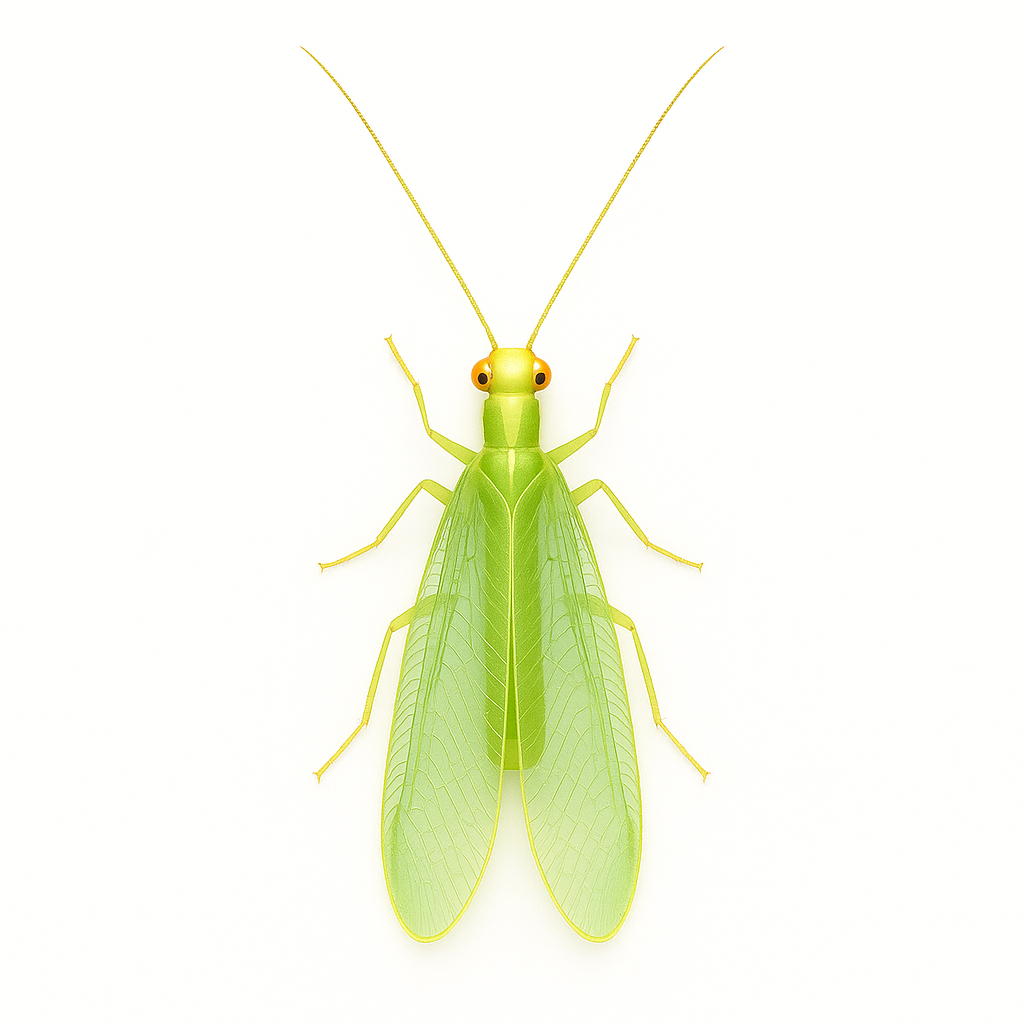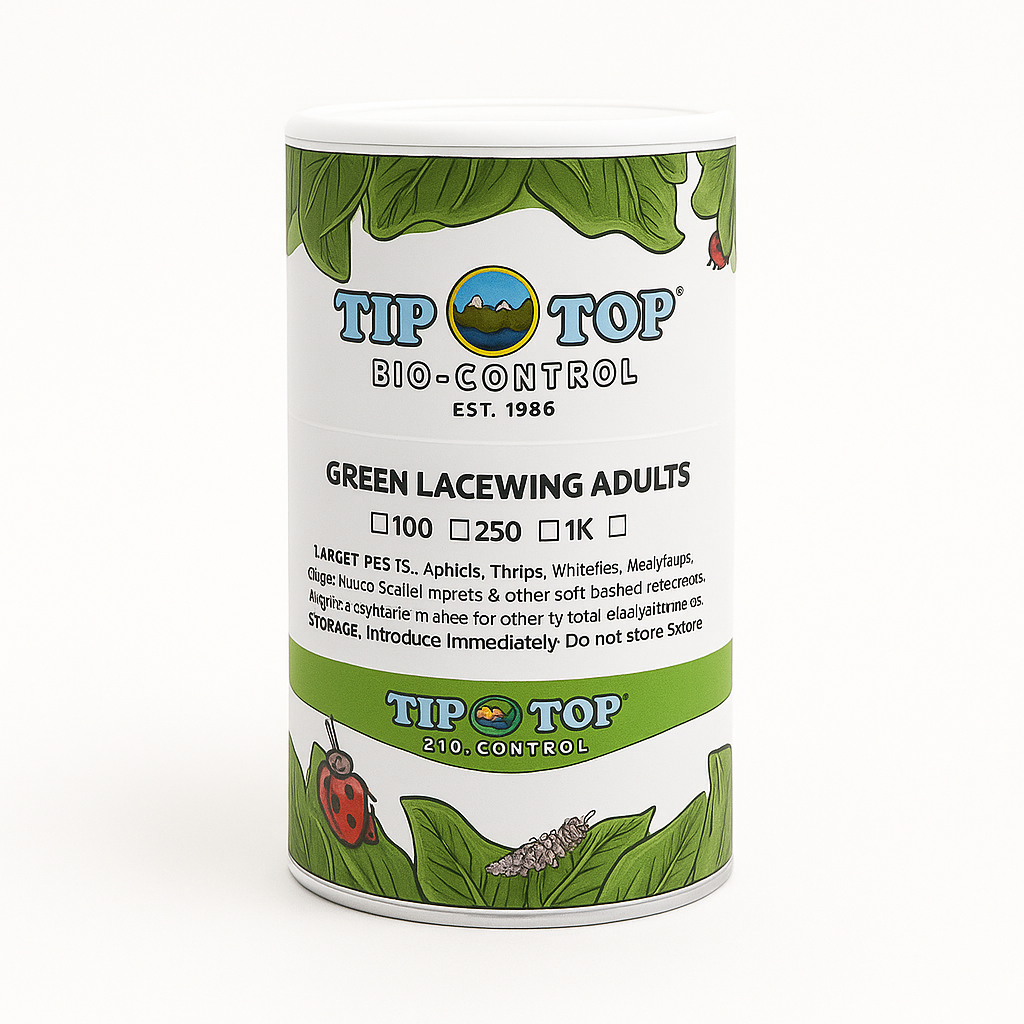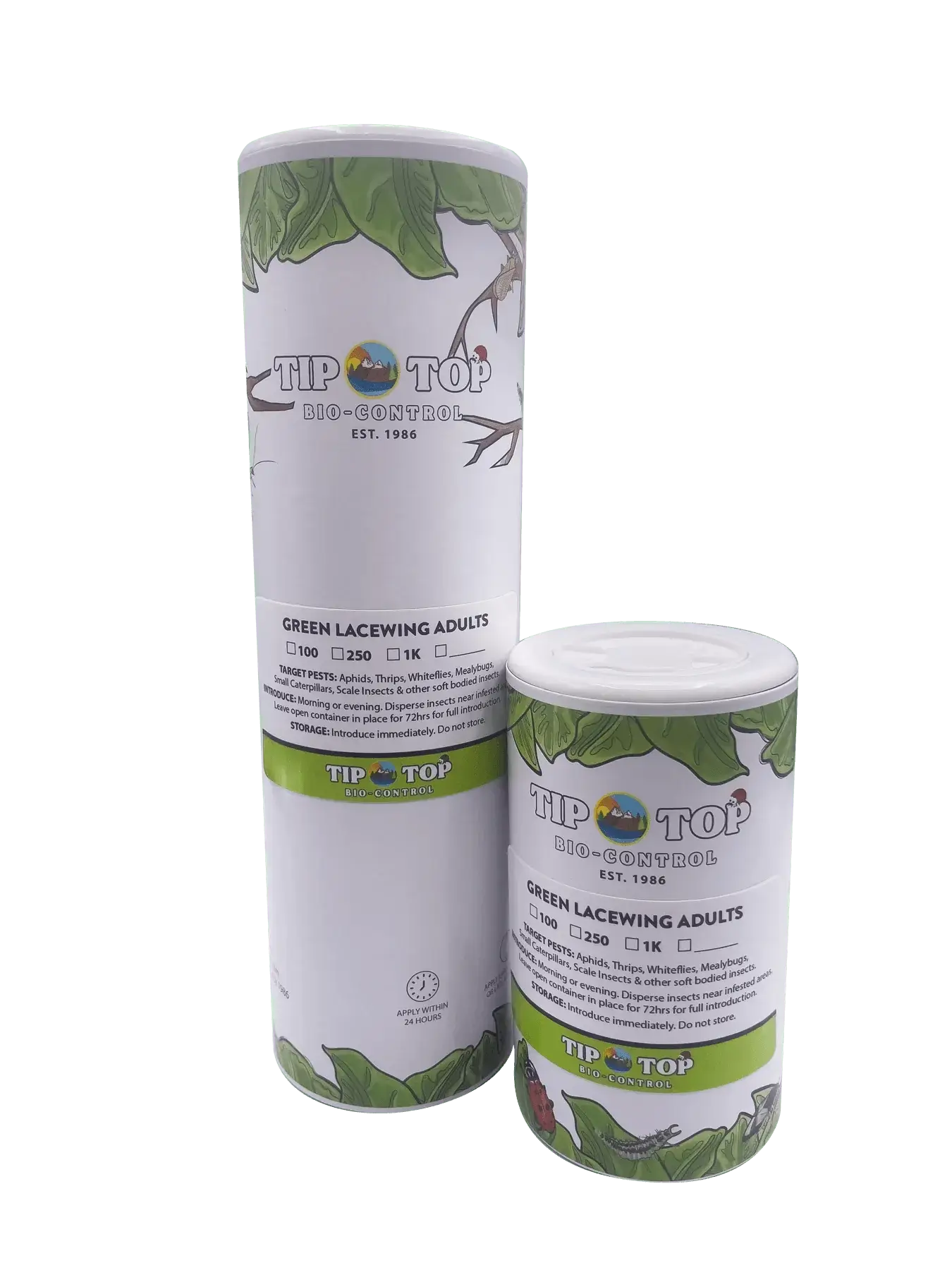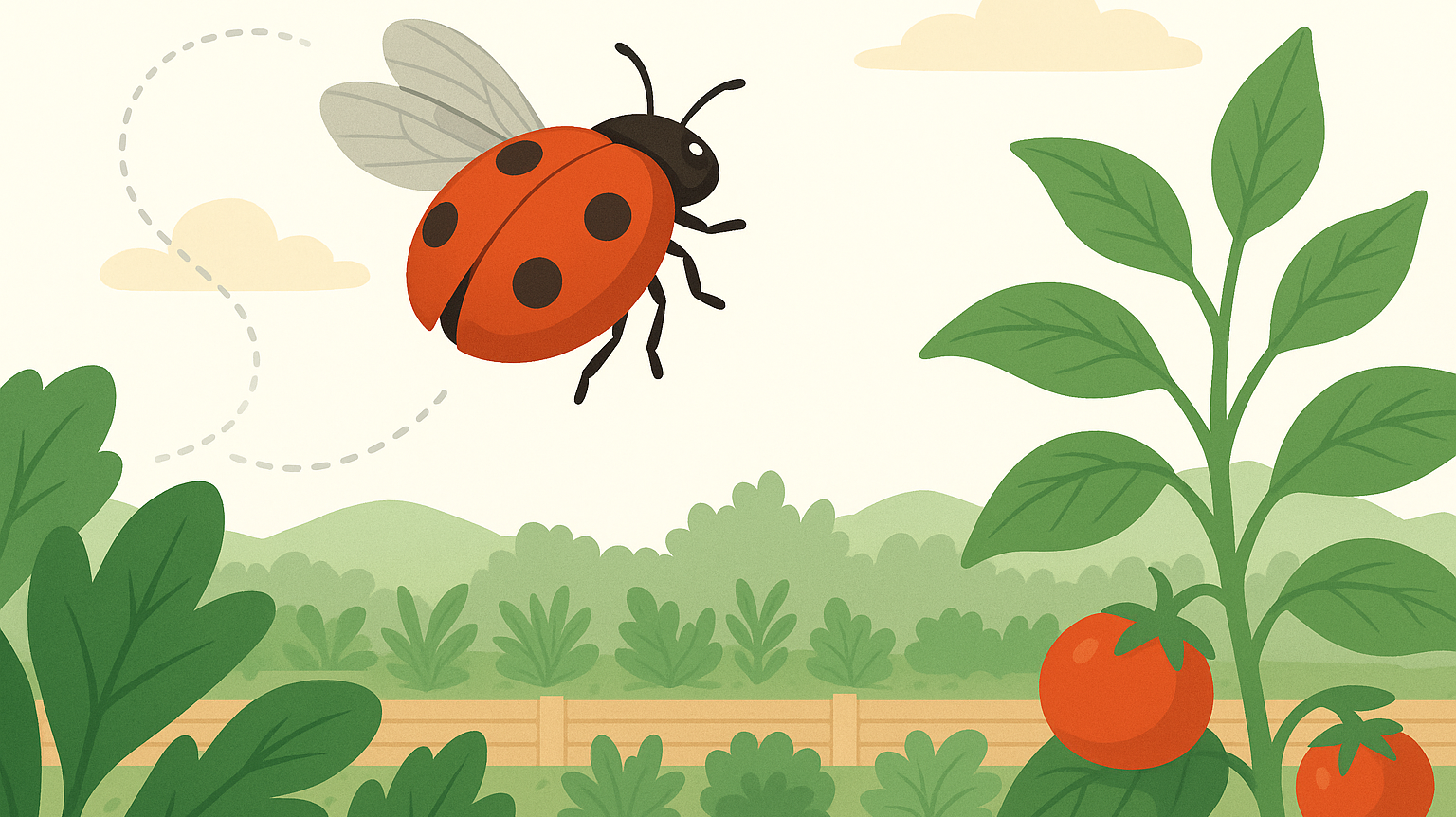How Do You Get Rid of Aphids (and Their Friends) Long Term?
Sprays knock them down. So do ladybugs—for a few days.
But if you’re looking for lasting biological control—something that doesn’t quit after the first round—lacewing adults are where you start.
Each female lays up to 200 eggs directly near aphid, thrips, or whitefly clusters. A few days later, those eggs hatch into lacewing larvae—nicknamed aphid lions—that feed nonstop for 2–4 weeks on soft-bodied pests.
Green Lacewing Adults
Long-Term, Self-Replicating Control for Aphids, Thrips, and Whiteflies
Adult lacewings don’t kill pests directly—but they lay the predators that do.
They also feed on nectar, pollen, and honeydew—supporting pollination and ecosystem balance while helping you build lasting, spray-free suppression.
This is a plant-friendly, pollinator-safe, lifecycle-based tool for growers who want the long game—not the reset button.
What They Help Control
| Pest | Stage Targeted (via larvae) |
|---|---|
| Aphids | All stages |
| Thrips | Larvae and adults |
| Whiteflies | Eggs, nymphs, and adults |
| Mealybugs | Crawlers and soft-bodied nymphs |
| Spider mites | Opportunistic |
| Soft-bodied insect eggs | Wherever larvae can find them |
Note: The adults lay the eggs. The larvae do the hunting.
Why Use Lacewing Adults for Long-Term Control?
| Feature | Why It Matters |
|---|---|
| Built-in lifecycle | Eggs hatch into larvae, which suppress pests over time |
| Low effort | Release once; let them lay eggs where the pests are |
| Dual benefit | Adults support pollination while larvae feed |
| Clean and scalable | Suitable for greenhouses, orchards, vineyards, and gardens |
| Zero residue | No sprays, no re-entry interval, no damage to plants |
This is biocontrol that multiplies in the field—not something you have to re-release every week.
Best Used For
-
Greenhouses, gardens, orchards, vineyards
-
Recurring aphid pressure on ornamentals or food crops
-
Soft-bodied pest complexes (aphids + whiteflies + thrips)
-
Growers focused on pollinator safety and sustainability
-
IPM programs that need biological persistence over fast reaction
How They Work
-
Adults lay eggs near pest colonies
-
Eggs hatch in 2–7 days
-
Larvae feed aggressively for 2–4 weeks
-
Adults feed on pollen, nectar, and honeydew to support beneficial insect activity
-
Some adults may overwinter and return the following season (in outdoor use)
How Much to Release
| Use Case | Rate |
|---|---|
| Small-scale prevention | 1 adult per 10 sq. ft. |
| Large gardens or beds | 500–1,000 adults per 1,000 sq. ft. |
| Full-scale application | 5,000 adults per acre |
Adjust based on pest pressure, plant density, and whether you’re releasing in stages or all at once.
Application Tips
-
Release immediately upon arrival—these are live, active adults
-
Time it right – Early morning or evening is best (avoid midday heat)
-
Distribute gently – Tap the container to let adults fly out naturally
-
Feed them if needed – Add a protein-rich diet to boost longevity in low-pollen environments
-
Avoid sprays – Any pesticide residue can reduce survival and egg laying
Shipping & Storage
-
Ships overnight with live arrival guarantee
-
Do not store—release on arrival
-
If delayed: keep in a cool, shaded place and release within 12 hours
-
Do not refrigerate or expose to direct sunlight
FAQ
How does the Live Guarantee work?
We know how important it is for your mites to arrive healthy and ready to work. That’s why we offer a live arrival guarantee—with flexible options depending on when we hear from you:
- Let us know within 24 hours of delivery: We’ll gladly send a free replacement shipment.
- Let us know within 2–3 days of delivery: We can offer store credit to make things right.
- After 3 days from delivery: Because these are living organisms, we’re not able to offer replacements or credit beyond that window. By then, it’s harder to know what went wrong or whether shipping conditions were a factor.
We truly want your mites to succeed—so please open your package as soon as it arrives and check on them. If something doesn’t look right, don’t wait—reach out and we’ll take care of you.
Where are you located?
We have a number of different locations in NJ, Maine and Oregon. While we'd love to have you, we are not currently open to the public.
Can I call you?
We get it. Sometimes it's easier to talk to someone, and on a case by case basis we can try to figure it out. Unfortunately though, we're really not able to take calls—FGMN is a small nursery, and we're usually elbows-deep in plants or packing boxes. To make sure nothing gets missed (and everyone gets a timely reply), we keep all communication in writing.
Feel free to message us at info@fgmnnursery.com. We mostly respond quickly, but every once in awhile replies may take a day. Do follow-up if you don't hear in that time. We're human, we miss an email here or there.
Too Many Options?
We get it. Try our mite/insect matchmaking quiz and instantly get matched to the solutions you may need.
Our Live Delivery Guarantee
We stand behind every leaf and every mite. If your plant or predatory insects don’t arrive alive on the first delivery attempt, we’ll make it right.
Here’s what you need to know:
- Email us at info@fgmnnursery.com within 24 hours of delivery
- Include clear photos of the item and the shipping label
- Someone must be available to receive the package—plants and bugs don’t do well sitting in the sun, a mailbox, or the back of a delivery truck
For plants, we offer store credit if something goes wrong.
For predatory mites and beneficial insects, you’ll have the choice of a replacement shipment or store credit.
If you contact us after the 24-hour window, we may still be able to help—just know it’s handled case by case.
We pack with care, insulate when needed, and check the weather before shipping. But once it’s in transit, the fastest way to protect your order is to open it right away.
Mite Matters
The Hidden Weather That Shapes Plant and Predator Life
Invisible weather shapes every growing space. Warm air pools under lights, cool air settles near the floor, and in between, tiny predators decide where they’ll thrive. Learn how microclimates influence the balance between plants, pests, and the mites that keep them in check.
If Ladybugs Are Just Going to Fly Away, Why Use Them?
Most ladybugs don’t fly off out of spite — they leave when the environment isn’t right. Learn how temperature, humidity, and shelter affect whether they settle or scatter, and how to create the ideal setup that keeps them working where you need them most.
Where Did My Predatory Mites Go?
Released predatory mites but can’t see them anymore? Don’t panic. Their invisibility is exactly what makes them effective. Learn why they vanish, how they hunt pests out of sight, and why reapplying keeps your plants protected.










